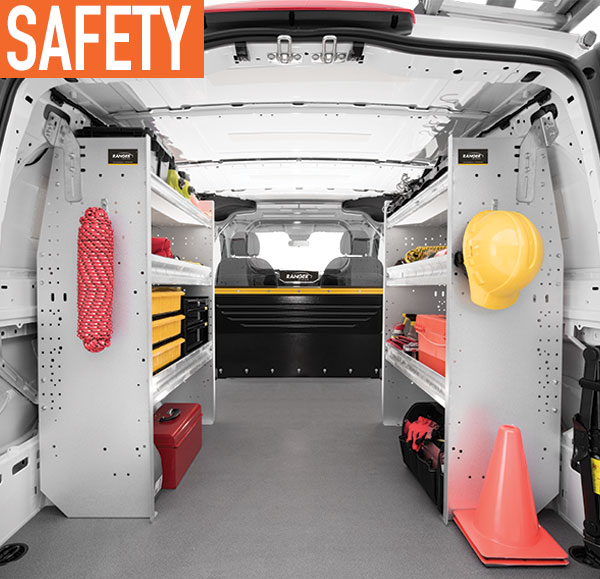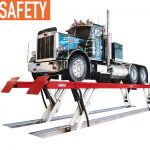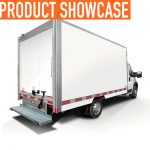Safety vests, safety glasses, safety straps, and safety belts. These are just a few things that we can associate with the idea of the need for safety and some of the tools we use to insure we’re safe.
It’s true that many consumer products over time have been redesigned, reengineered, and rethought after the originals presented hazards that may have caused injuries to users—sometimes even worse. That’s one more reason that the free market is such a wonderful place to introduce products where consumers not only use products that once may have been hazardous, they use products that provide safety measures in any given occupation.
HISTORY LESSON
Depending on where you fall in the age range, you’d recognize the majority of consumer products that we use today have evolved over time as designers and manufacturers create useful products that are made with safety in mind first. But, there was a time in the not too distant past when cars and trucks in the US rolled off the assembly lines and onto dealership lots ready to sell to customers…without seatbelts. This is something no driver or passenger today would accept in most cases—even aside from the fact that today there are 49 states where using a seat belt system is required by law.
Here is the official description of a seat belt or Primary Restraint System:
A seat belt, also known as a safety belt, is a vehicle safety device designed to secure the occupant of a vehicle against harmful movement that may result during a collision or sudden stop. A seat belt functions to reduce the likelihood of death or serious injury in a traffic collision by reducing the force of secondary impacts with interior strike hazards, by keeping occupants positioned correctly for maximum effectiveness of the airbag (if equipped), and by preventing occupants being ejected from the vehicle in a crash or if the vehicle rolls over. When in motion, the driver and passengers are traveling at the same speed as the truck or van. If the vehicle suddenly stops or crashes, the driver, passengers, and cargo continue at the same speed it was going before it stopped. A seatbelt applies an opposing force to the driver and passengers to prevent them from falling out or making contact with the interior of the vehicle. Seatbelts are considered as Primary Restraint Systems because of their vital roles in occupant safety.
Given the design, redesign, and use of improved materials, seat belt use has been instrumental in reducing serious injuries and the number of deaths as a result of automotive accidents. While this isn’t an article wholly about seat belts—as new safety devices, such as airbags, certainly contribute to reducing risk—the theme is about how automotive companies continue to make great strides in manufacturing products that are designed to protect the vehicle’s occupants: lane change warning, computer assisted pre-collision braking systems, back-up cameras, and more. Technology is moving so fast that in the not too distant future, what are now options will become standard features on most vehicles.
INCREASING SAFETY
In the ever growing commercial van market, we’ve seen great strides in the aftermarket ability to design, engineer, and manufacture a product that protects both driver and passenger from cargo projectiles in the event of an accident.
And, while they are not mandated, safety partitions—or bulkheads as they are often called—are the one piece of equipment with which every commercial van should be equipped. Designed to separate the van cab from the cargo area to protect occupants is only one benefit that the partition provides. A contoured partition is designed to protect occupants and allow for full seat extension, as well as improved recline, resulting in a more comfortable driving/riding position, especially for folks that are six ft or taller.
Safety partitions also come with or without access doors. A door allows for easy movement into the cargo—or work area depending on how the van is upfit—space without exiting the vehicle. Some workers prefer sliding doors while others like the swing door safety partition. Both usually come with a lock to make the cab area even more secure.
The vast majority of safety partitions are most commonly made of steel, which is custom cut to fit in the many different van models and configurations on the market today. They’ve been around for half a century. Military grade aluminum is another popular option, as the lighter weight lends itself well to van users that are concerned with increasing payload capacity and improving fuel economy.
The newest and most innovative product now available as a bulkhead is the very nice and tight fitting composite partition. With space-age materials and a clear, “see through” top section, the composite unit provides more ambient light into both the cab and cargo areas. The molded product allows for a more improved seal against the van ceiling and walls. As the best fitting partition in the marketplace, the design also allows for improved climate control in the cab—faster cooling in the warmer climates and quicker heating when it’s cold. The lighter weight also provides similar payload benefits as the aluminum safety partitions. And, I believe that it’s worth repeating: Safety partitions in their many styles and various materials are an absolute necessity when it comes to protecting the most important cargo in a commercial van…the occupants.
So, whether you use seat belts, safety glasses, or a safety partition, know that the saying “Safety First” is as important today as it ever was.
ABOUT THE AUTHOR:
Steve Milizia is a freelance writer out of South Burlington, Vermont with contributions in Vermont Times, as well as several other fleet-driven industry publications. He also works as a business development manager with Ranger Design.
_______________________________________________________________________
MODERN WORKTRUCK SOLUTIONS: MAY 2017 ISSUE
Did you enjoy this article?
Subscribe to the FREE Digital Edition of Modern WorkTruck Solutions magazine.
![]()




